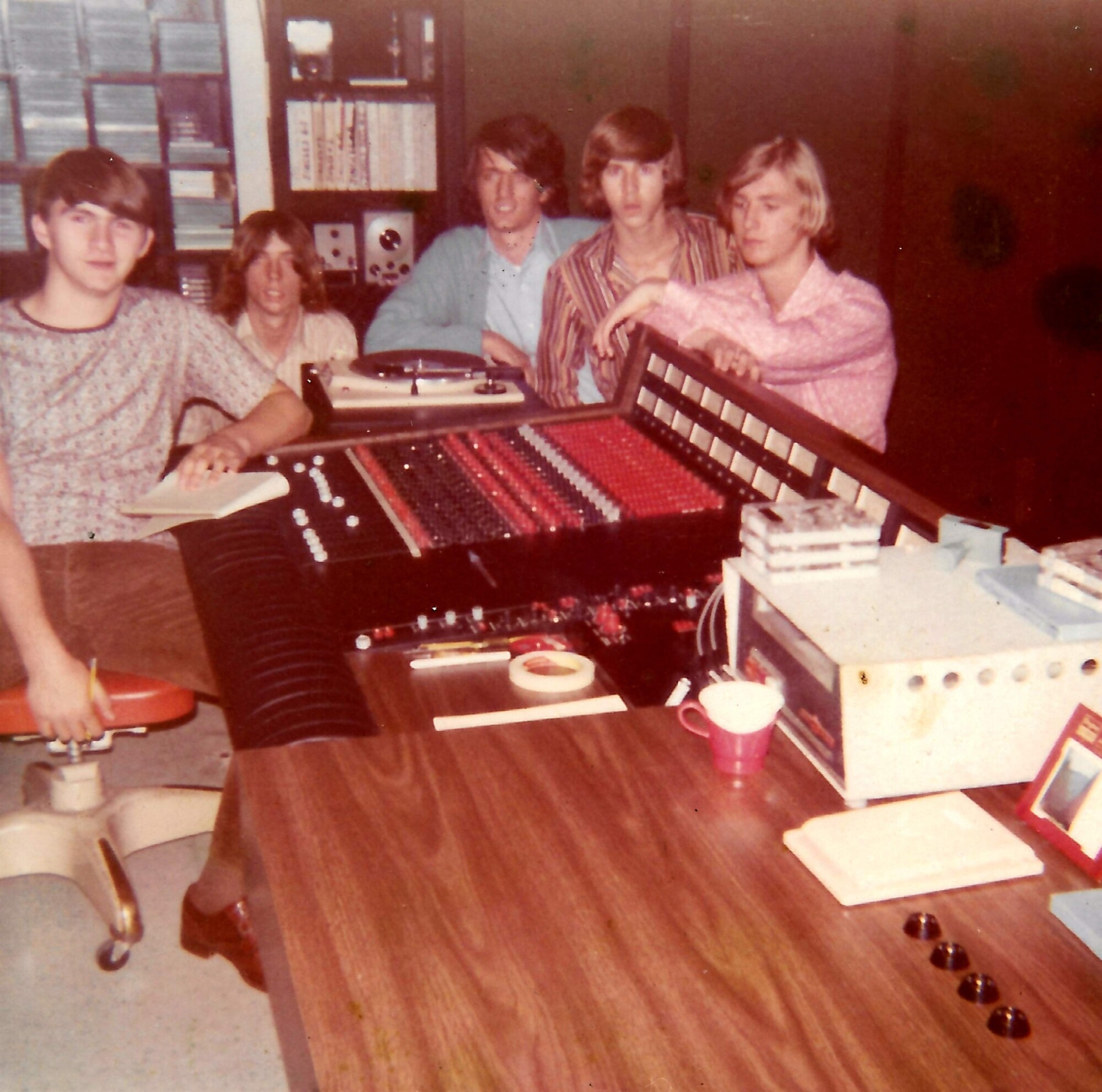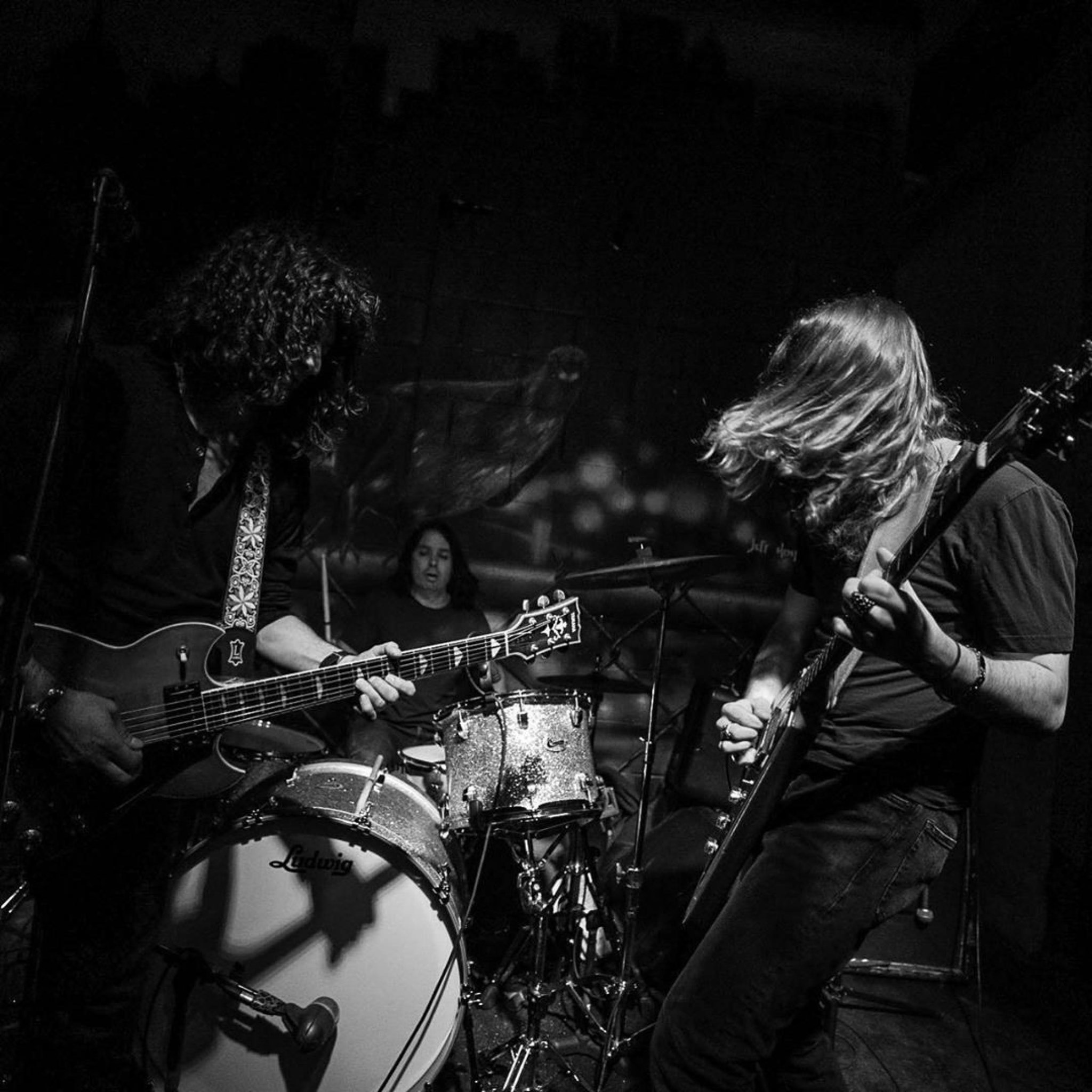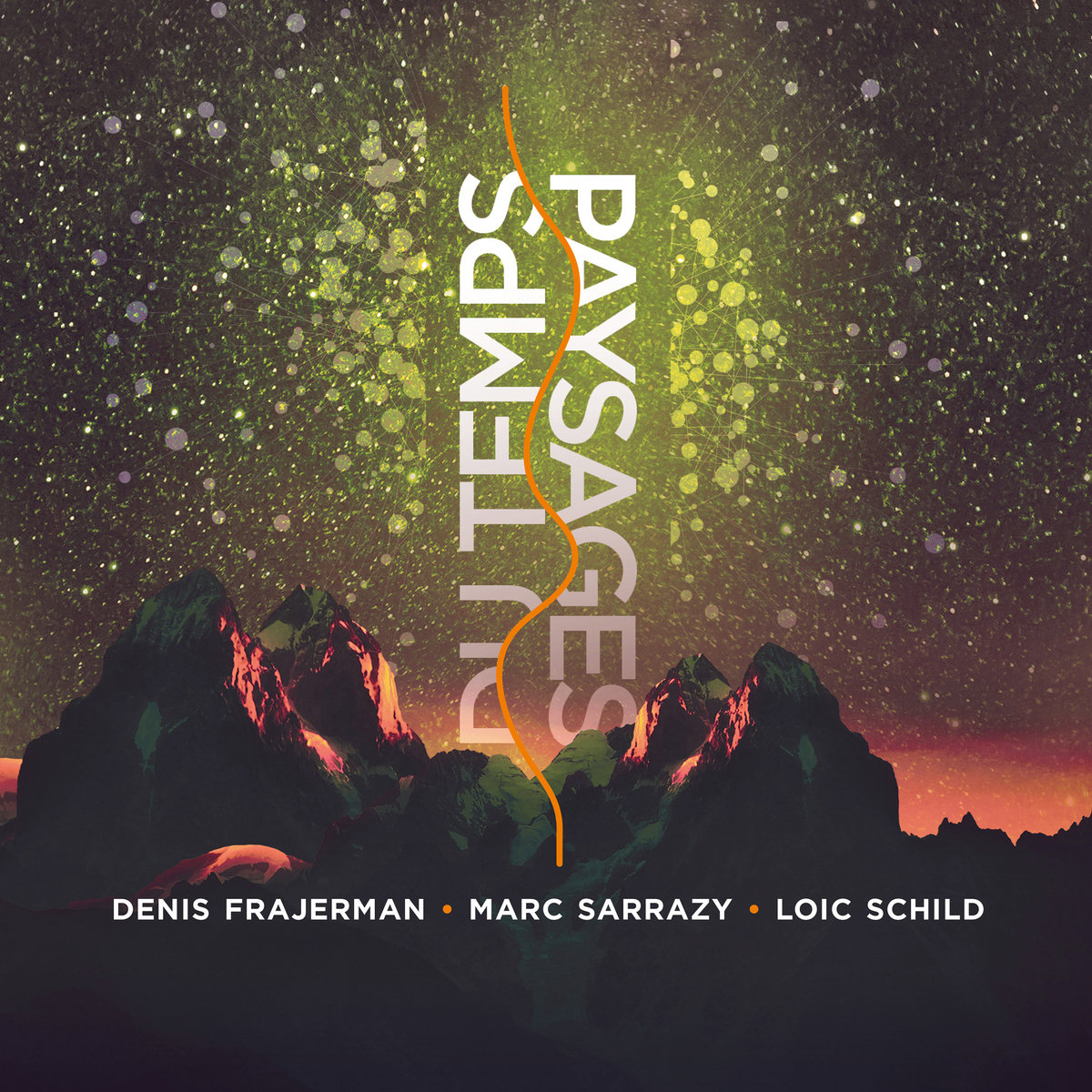Underground Fire | Interview | “Another mind-bending relic from the wild 70s”
Noble Records is set to unleash another incredible LP from the ever-amazing 1970s. The album, originally released in 1972, is now available on digital platforms, with an exciting vinyl reissue coming soon.
Underground Fire blazed onto the scene with the fiery energy of teenage rebellion and rock ‘n’ roll dreams. Mike Spurlock and Roger Helms, the dynamic duo behind the band, recall their humble beginnings jamming in garages and school hallways, fueled by a love for music and a knack for mischief. From their early gigs at junior high assemblies to winning Battle of the Bands competitions, their journey was a whirlwind of adrenaline and ear-splitting guitar riffs.
Their debut album, recorded in the sweltering summer of ’72, captured the essence of youthful exuberance and the unmistakable scent of freedom. Picture them in Arthur Smith Studios, surrounded by vintage amps and sticky studio floors, laying down tracks like ‘Loving Man’ and ‘Evil Woman’ with the fervor of kids who just discovered the power of electric guitars.
But it wasn’t all serious business. Between takes, there were impromptu jam sessions and inside jokes that would make even the studio engineers crack a smile. And let’s not forget the legendary mix-up that turned ‘Cardack’ into an accidental piece of great music, courtesy of a misspelled biology term and a dash of teenage rebellion.
As they look back on their wild ride through the ’70s, Mike and Roger can’t help but chuckle at the absurdity of it all—the crazy gigs, the DIY recording sessions, and the lifelong friendships forged in the crucible of rock ‘n’ roll. So here’s to Underground Fire, the band that lit up the night sky with their music and left a trail of smoke and memories in their wake.
Although the band members eventually went their separate ways, their music endured, finding new life decades later with the reissue of their album by Noble Records. The unexpected resurgence of interest in their music brought them both nostalgia and excitement, reminding them of the friendships forged and the dreams chased in their youth. As they reflect on their journey, they express gratitude to those who have supported them throughout the years and to the fans who continue to appreciate their music.
“We were usually too loud for most indoor places”
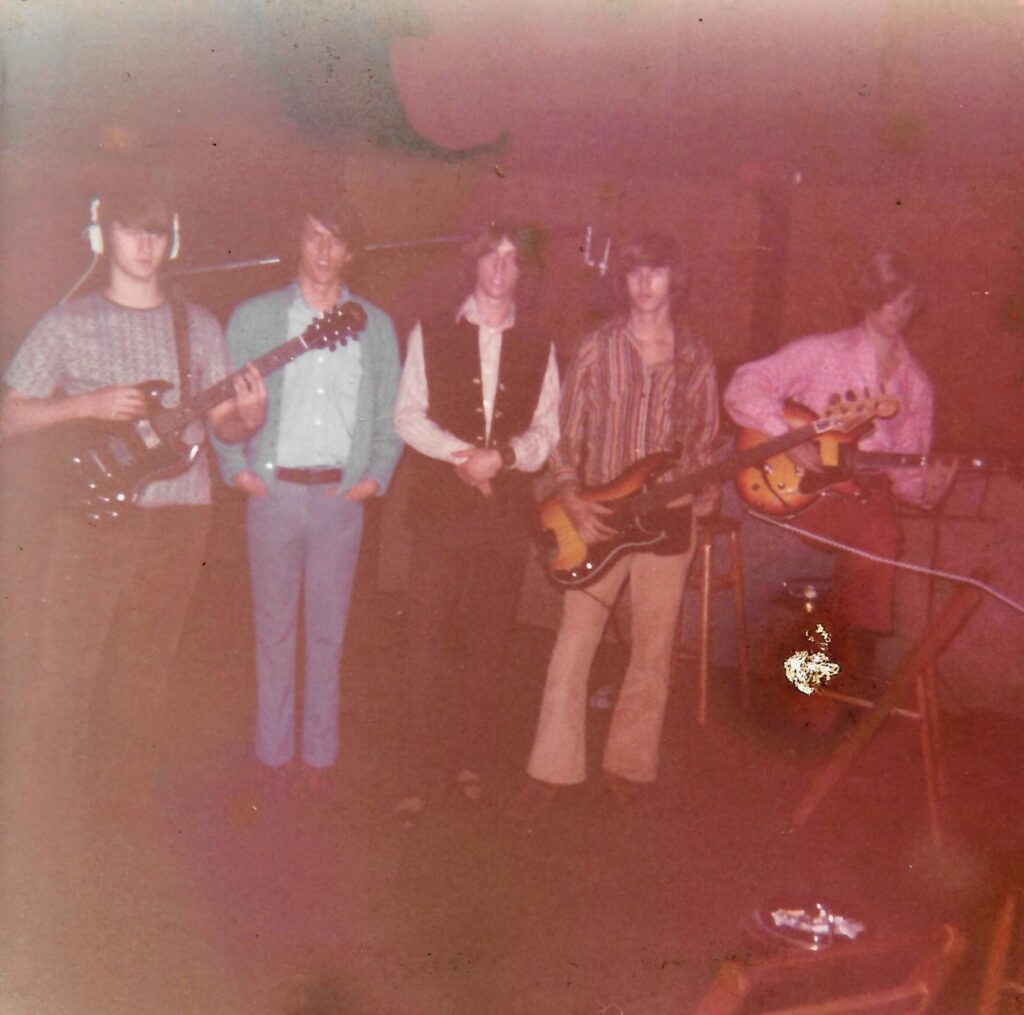
Where and when did you grow up? Was music a big part of your family life? Did the local music scene influence you or inspire you to play music?
Mike Spurlock: I was born and raised in the Carolinas in 1957. At 10 years old, I started playing drums and guitar. In the summer of 1969, I started my first rock band with my cousin, Rusty Ellis, and Tommy and Johnny Laney. We first started playing at our junior high school assemblies and talent shows. This is where we realized that we loved playing music in front of large audiences. The name of our first band was Transit. During the ’70s in our town, there were a lot of live bands, and everyone seemed to have the music bug.
Roger Helms: I grew up in Monroe, North Carolina. I started being interested in music at a very early age, being fascinated with Elvis, Ricky Nelson, and The Beatles. I tried to get every record I could, and I’m sure I annoyed my parents to no end playing them over and over. My sister, who is about 16 years older than me, played piano and organ for her church. That is about the extent of music being a part of my family. My parents bought my first guitar for me when I was around 10 or so. It was a cheap Stratocaster copy with strings about a half-inch off the neck. It came with an inexpensive amp that still had enough power to make them regret ever getting it. But it’s what I taught myself on, along with a Kent acoustic that I got a bit later.
What bands were you a member of prior to the formation of Underground Fire?
Michael: In 1970, my family moved from our home in the country to a home in the town of Monroe, NC. Next door, there was a band called The Blue Rebellion. They found out that I played guitar. They needed a bass player, and I told them I would give it a try. We came together very fast and soon went to a local music store and bought new Fender amps and Univox guitars and basses. A month later, we won third place in our city’s Battle of the Bands.
Roger: A friend and I got together after I had taught myself a few chords just for the fun of it. He had a drum set, and we got together several times before adding a couple of new friends to the mix. My drummer friend switched to bass guitar, and suddenly we had a band. We were known as “Blue Rebellion.” We did pretty well, playing Moose Lodge events and a few 4th of July festivals. We also placed first in our first Battle of the Bands. That really cranked us up. We became the house band at the Pageland Theater in Pageland, South Carolina, for a while, which was an old movie theater converted to a music hall type place mainly for local teens who had nothing else to do. We really had some good times there.
Did you record anything or play some gigs with those bands? What did your repertoire consist of?
Michael: Before I joined Blue Rebellion, they had made a 45 rpm, 7-inch record: ‘Tell Me Baby’ and ‘Blue Hours of Darkness.’ The members were Roger Helms on lead guitar, Danny Taylor on drums, and Mitchell Griffin on guitar and vocals. The singer loved Elvis, and his voice matched the Elvis-style music. Since we were underage, we could only play at private parties, high school events, dances, and outdoor events.
Roger: With Blue Rebellion, we recorded a single 45 record: ‘Hours of Darkness’ and ‘Tell Me.’ I think we had maybe 500 copies and did get a few plays on local radio stations. There is actually a copy of it on eBay now with an asking price of $157! Blows my mind! Our singer had a very “Elvis-y” quality to his voice, so we did quite a few Elvis tunes among other popular songs of the time, which was the late ’60s.
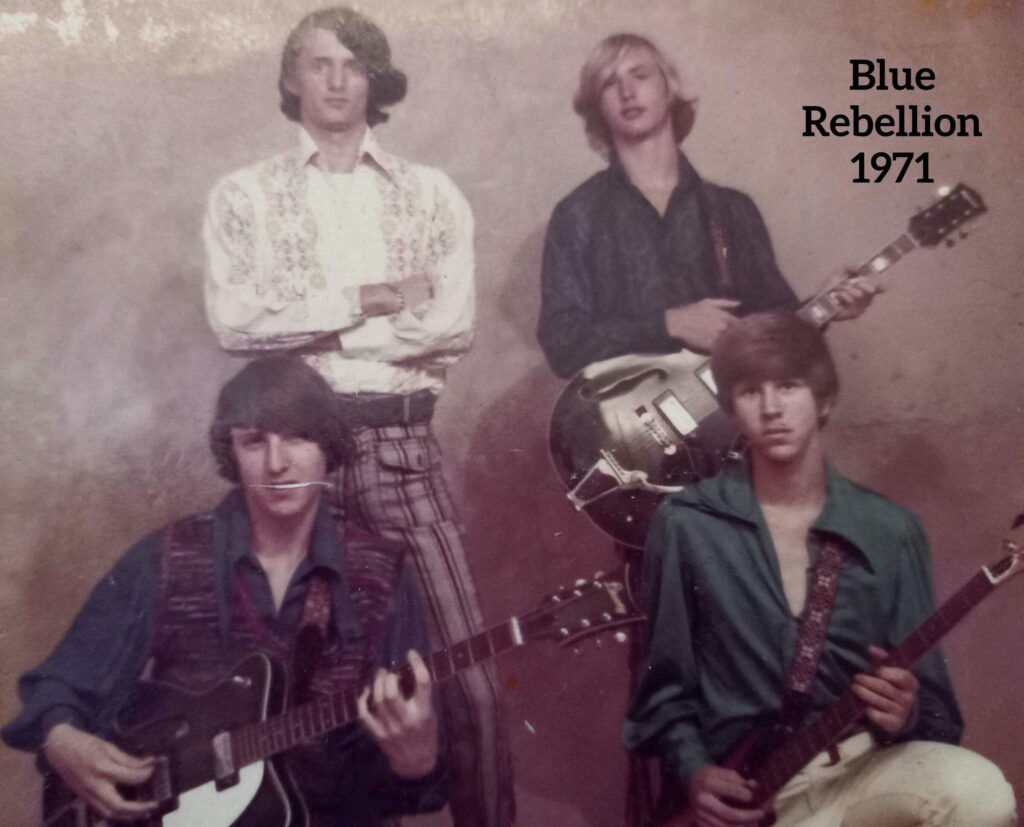
Can you elaborate the formation of Underground Fire?
Michael: In 1971, Roger Helms on lead guitar, Danny Taylor on drums, and myself, Mike Spurlock, on bass guitar joined with Errol English on second guitar and Randy Jenkins on vocals.
Roger: Underground Fire came into being just after Blue Rebellion parted ways. It’s been so long ago, I can’t even remember why we broke up. Most of the members stayed together, getting a new singer and rhythm guitar player. That is when I switched to lead guitar. This was around 1970-71 or so. I’d have to say that Alice Cooper and Grand Funk were two of our idols, and we played several songs by each. Our music was a bit heavier than Blue Rebellion. Not by a lot, but noticeable. We played several outdoor shows and another Battle of the Bands, winning third place (I think it was). We also played a few parties and local venues.
What was the scene in your town? What were some other bands around?
Michael: There were lots of bands in the Monroe and Charlotte, NC, areas at that time. Some of the other bands were Sugarcreek, Eastern Seaboard, High Gear, Destiny, Airway, and many more.
Roger: Wow, it has been so long ago, I really can’t remember very many of those, although quite a few of our friends also had some garage bands. I do remember two that were top-notch bands that really inspired me. One was a band called “Westwood.” The guitar player amazed me, making me think, “Man, I wanna be that good!” The second was a band called “Airway.” If I remember correctly, they even opened for Steppenwolf at a Charlotte show. A good friend of mine was the bass player in that band, and they did really well.
When and where did Underground Fire play their first gigs? What sort of venues did you play? Where were they located? How was the band accepted by the audience?
Michael: In 1971, there was a statewide Battle of the Bands in our town, held over a 3-day period, which included over 20 bands. It was held in our local Moose Lodge in Monroe, NC. Underground Fire came in a close second to Airway, who as part of their prize, got to open up for Alice Cooper at a large music festival in Charlotte, NC. After that, Underground Fire played at country clubs, lodges, city events, and private events around the area.
Roger: Again, time fogs my memory. We played some outdoor concerts and a lot of parties and such. I guess we could be grouped as a party band more than anything. We were usually too loud for most indoor places, haha. We were liked wherever we played.
How did you decide to use the name “Underground Fire?”
Michael: At that time of the ’70s, most people learning how to play guitar and drums listened to and loved the music of The Ventures. They had an album and a song entitled ‘Underground Fire,’ and I still have that album today.
Roger: After Blue Rebellion, we wanted a different name. A lot of decisions were made sitting in school when two or more of us were in the same class. We often spent more time discussing such matters than doing what we were supposed to be doing. It was there that I think the bass player and I came up with Underground Fire. Pretty sure it came from something to do with the studies or class that we were supposed to be in. But again, time fogs the memory.
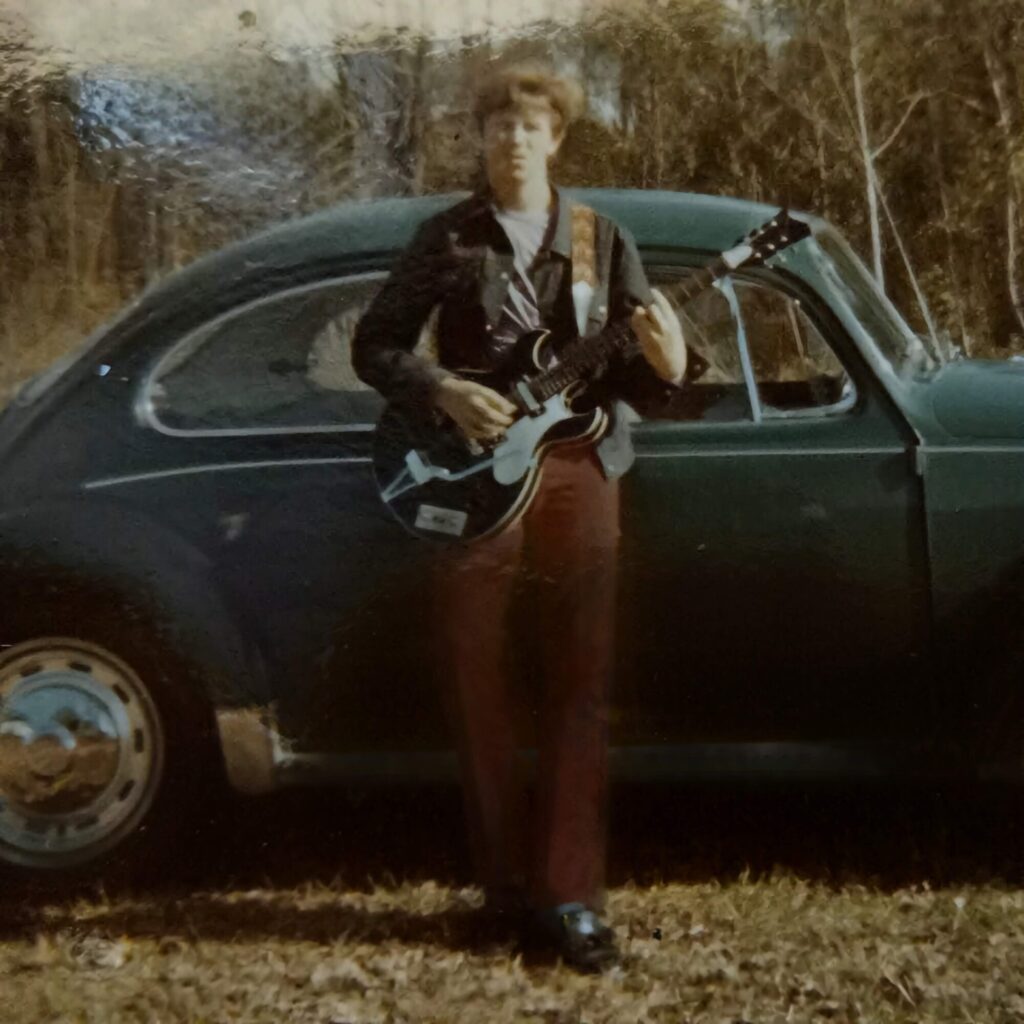
“Our live sound was nothing like the record”
What influenced the band’s sound?
Michael: At that time, we were playing music by Steppenwolf, Iron Butterfly, Alice Cooper, Cream, Grand Funk, Creedence Clearwater Revival, Hendrix, James Gang, Moody Blues, and The Beatles.
Roger: Our live sound was nothing like the record. We played a lot of Alice Cooper, Grand Funk, and various other bands that were popular at the time, although we did play a few songs from our album at a few later shows.
How did Noble Records find out about your album and are you excited about the reissue?
Michael: A couple of years ago, a friend of Dillon Smith’s, owner of Noble Records, found one of our 50-year-old albums at a yard sale. They listened to it, and Dillon fell in love with it, making up his mind that he was going to start his own label and have us as his first artist on his reissue label, Noble Record Label. He began calling me about putting it back out because, after 50 years, the album was very rare, and nobody had any copies or knew any history of it or us. So, on May 5th, 2023, we signed a deal to be the first band signed to Noble Records. We are very excited about the first re-release of Underground Fire in 52 years. The music has been available for digital downloads on all major streaming services since October 6th. The record albums will be finished soon. We are very excited about the release of Underground Fire.
Roger: A friend of Dillon Smith found a copy of the album at a yard sale and brought it to the record shop. Neither had ever heard of the band before and decided to play it to check it out. To my amazement, they seemed to love it! That record was a part of my long-ago youth, and pretty much forgotten about. It blew my mind when I found out it had become popular in some circles, even as far away as Europe. Then my mind was really blown when I found out that Noble Records wanted to reissue it over 50 years after we made it. Still hard for me to believe. I am definitely looking forward to the reissue!
Tell us about the record itself. When did you record it? Where did you record it? What kind of equipment did you use and who was the producer? How many hours did you spend in the studio?
Michael: We recorded Underground Fire in the summer of 1972 at the world-famous Arthur Smith Studios in Charlotte, NC. We used Fender Twin amps and the studio drums at the session. Clay Smith, son of Arthur Smith, was the producer and publisher of Underground Fire. We had 8 hours of recording time.
Roger: The record was recorded at Arthur Smith Studios in Charlotte, North Carolina, in 1972. My guitar was an old Univox hollow body if I remember correctly. I was going to use my “Super Fuzz” pedal on the recording, but it messed up just before time. So I ended up with a “Fuzz Face” that the bass player owned instead. It had a gritty, raunchy quality that seems to be one of the things people like most about the record. We spent most of the day in the studio. Arthur Smith himself even came in and played one song with us (not on the record), and he tuned our guitars for us as well. Back then we didn’t have electronic tuners and such, and he wanted us to be “right.” I am not sure of the producer. Although a local construction company owner is the one who helped us financially, as he was a huge fan. It was more for fun and just saying we made an album than anything.
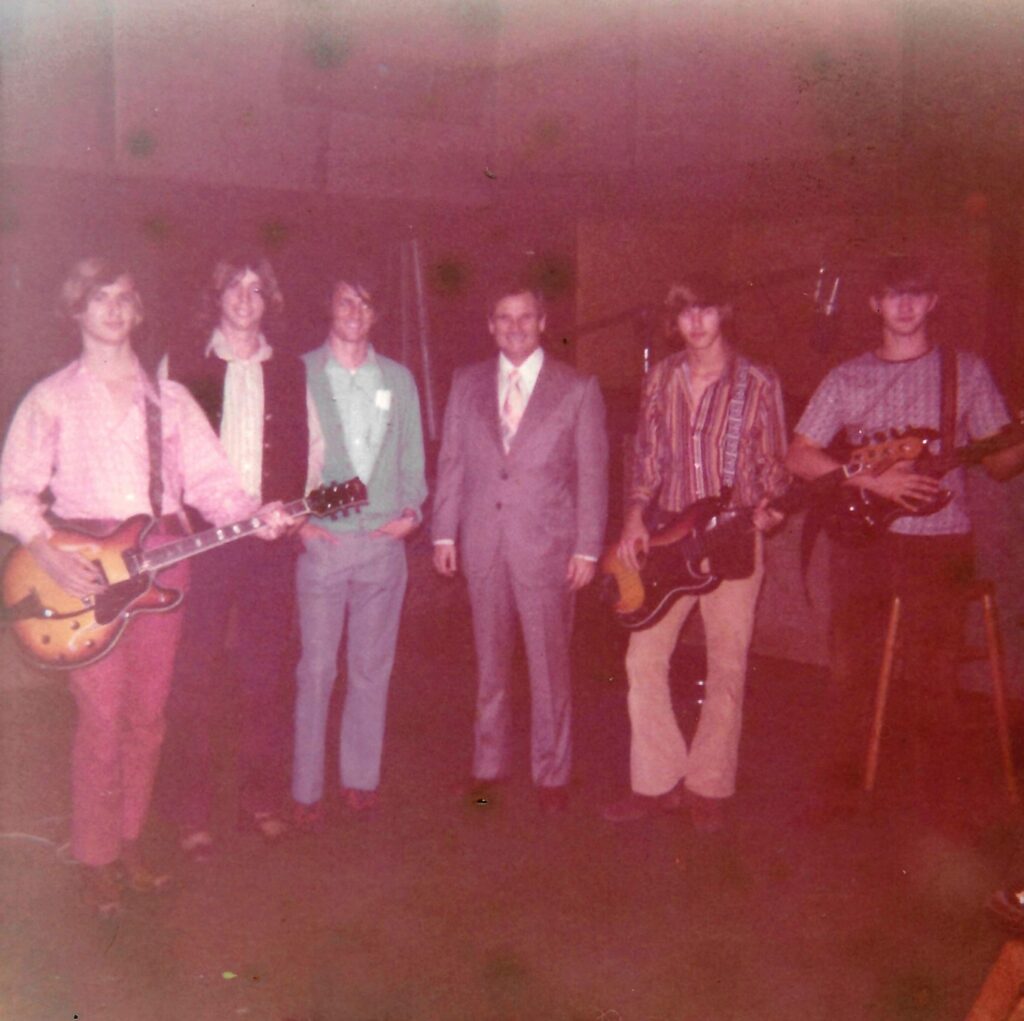
Please share your recollections of the sessions. What were the influences and inspirations for the songs recorded?
Michael: Clay Smith also did the album artwork. Arthur Smith himself, his brother Ralph Smith, and Tommy Faile engineered the sessions. After meeting Arthur, taking a few pictures, and even jamming a little guitar boogie with him, soon we were ready to start recording.
Roger: I remember screwing up time after time and being nervous! The drummer must have felt the same way as he had a few episodes of stick clicking, but we finally made it through. Again, we were all very young and still in school. We had one week to write and practice whatever we wanted to record. Most of quite a few classes in school were spent coming up with words and trying to visualize a tune for them to go with. Again, me and Mike, the bass player, came up with most of the titles and lyrics sitting in class at school. It was all stuff just out of our head, and if you’ll notice the titles, we had love on the brain. Hey, it was 1972!
Would you share your insight on the albums’ tracks?
Michael: Three weeks prior, our singer, Randy Jenkins, and his brother, our manager met with Arthur and set the appointment for the recording sessions in three weeks. At that time, we were only playing cover songs by Grand Funk, Alice Cooper, Rolling Stones, and others. We had zero original songs. That night, I wrote ‘Loving Man.’ It was the first song I had ever written, kind of a Jimi Hendrix-type rhythm. Next, I wrote ‘Love The One That Loves You.’ And then ‘I Love You,’ kinda my ballad, and next came ‘We Can Make It,’ our longest song, 8 minutes and 47 seconds. Danny Taylor, our drummer, loved the solo on Iron Butterfly’s ‘In-A-Gadda-Da-Vida,’ so we put a drum solo on it. During those three weeks, we got the basic parts of the songs and jammed them out until we had them tight, then worked and wrote more. Next, it was ‘Evil Woman.’ I guess it was inspired by an adolescent crush on the gothic actress Lara Parker, who played Angelique Bouchard on the horror soap Dark Shadows. Then ‘You’ll Like It,’ fast lyrics, almost pre-rap. Next, Roger Helms, lead guitarist, wrote his love song, ‘I Loved Her.’ Then, Errol English, second guitarist, came up with our last jam song, ‘Cardack,’ 5 minutes and 25 seconds. The chord progression sounds very much like another Southern rock classic that didn’t come out until 1973?
A1 ‘Loving Man’
Roger: This is one of my favorite tracks. It has more of a beat and rhythm that I like.
A2 ‘Love The One That Loves You’
Roger: This one is okay, but just too “bouncy” and playful for my tastes.
A3 ‘I Love You’
Roger: Another song about love!
A4 ‘We Can Make It’
Roger: A heart-touching song that simply states you can make it if you try.
B1 ‘Evil Woman’
Roger: Another of my favorites. I guess this one is about love as well, or falling in love with the wrong one.
B2 ‘You’ll Like It’
Roger: This one is another one that is a bit too “party mood” for me, although I like it really well.
B3 ‘I Loved Her’
Roger: This one is the one I wrote. Mike wrote most of the others. Again, it’s been over fifty years ago, but pretty sure this one had to do with some puppy love breakup.
B4 ‘Cardack’
Roger: We decided to have an instrumental in the mix, and this was it. One of the guys didn’t write a song at all, so we gave him this one. I do remember what class we were in when we named this one. Biology class. The word “Cardiac” was mentioned in the class, and we thought that would be a great song name. Mike wrote it down, but as spelling wasn’t his best subject, it became ‘Cardack.’ It was noticed before the recording, but we decided to just leave it that way. It is a fun, fuzz-filled romp through basically the same thing over and over again.
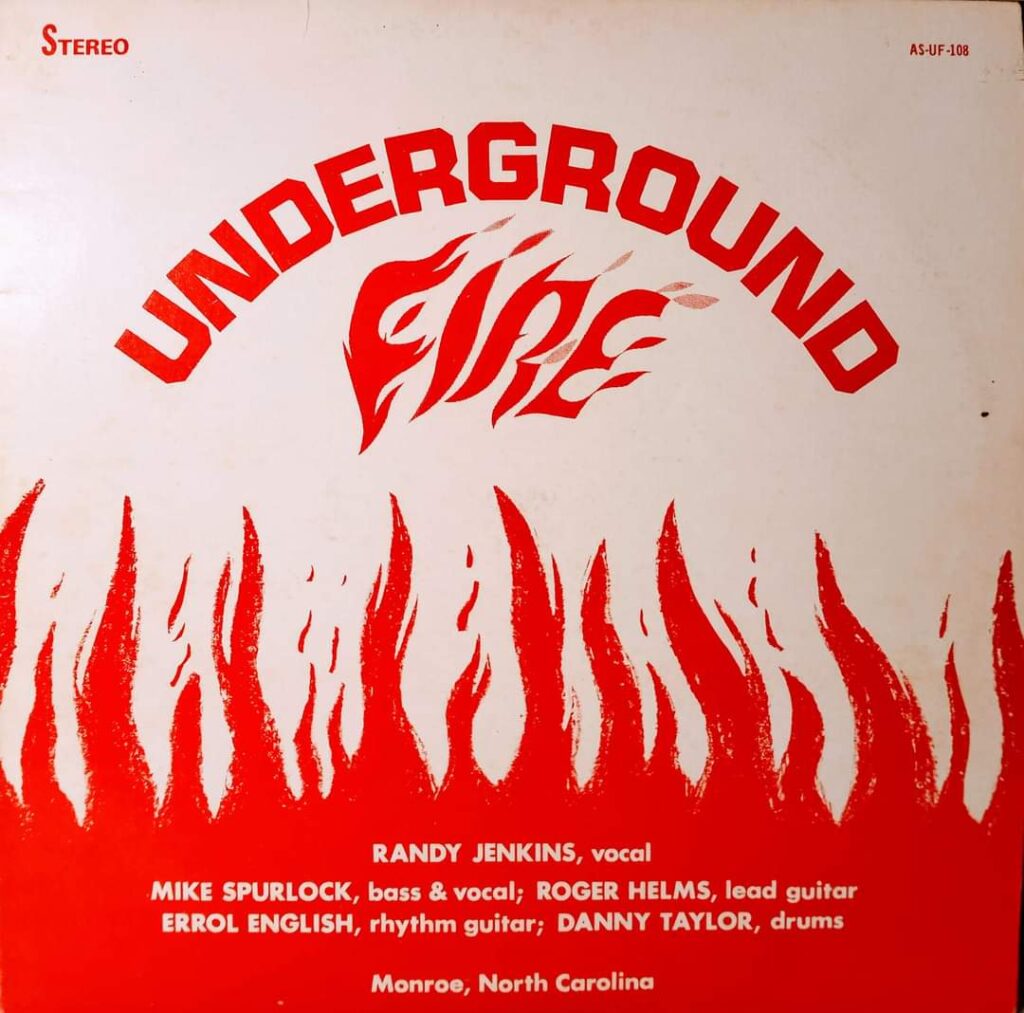
Was there a certain concept behind the album?
Michael: I guess it would have to be adolescent love or lack thereof. We were mostly all still in school and didn’t know much about love or heartbreak. But, we just liked to play rock and roll, so that’s what we did.
Roger: Well, apparently it was love!
Were you inspired by psychoactive substances like LSD at the time of writing the album?
Roger: No LSD, but I’m sure there was some smoke involved…..
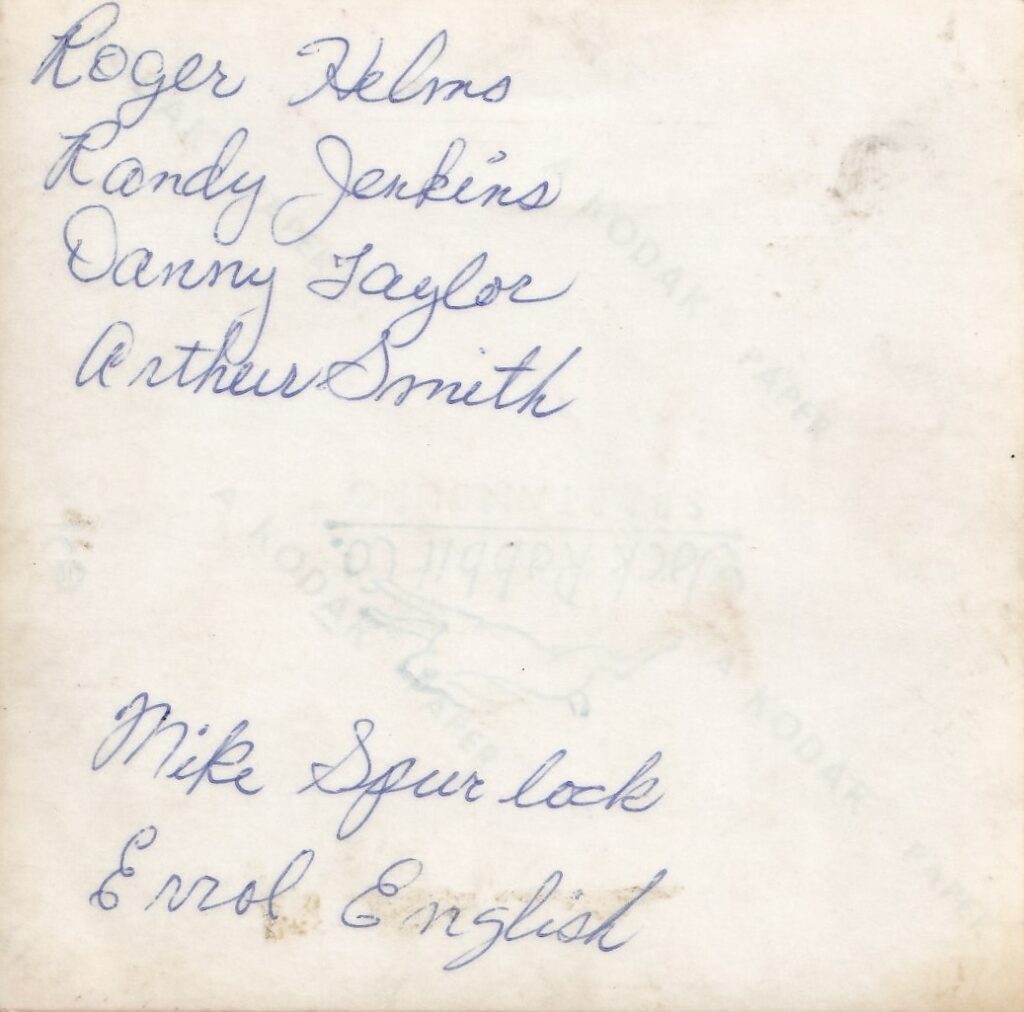
How pleased was the band with the sound of the album? What, if anything, would you like to have been different from the finished product?
Michael: We were very pleased with the mix of the album. We would have liked to have had more time to work on songs and wish we had more copies of records.
Roger: At the time, we loved it! In the years after, I sort of became indifferent to it. To be honest, I wish we had a much better singer. Also gotta remember we were all young teens, and back then there was no YouTube to teach you anything you want to learn. We just figured things out as we went. Today, a teen can sit down with a guitar and YouTube and be playing like Tony Iommi in no time. Back then, to learn lyrics we had to sit down with a record player and play a song over and over again trying to pick out what lyrics were. Could take hours! Videos of kids playing today make me almost ashamed of my playing ability back then. But it was ok for the time I guess.
Where did you press the record and how many copies were made? Did you send them to any radio station or labels? Did you get any airplay?
Michael: We recorded at Arthur Smith & Clay Smith Publishing handled the pressing and even designed the album artwork. We had 1500 albums pressed. We had a little airplay on some local radio.
Roger: Not sure exactly where it was pressed. All that was handled by Arthur Smith Studios for us. I am thinking we only had 500 copies pressed, but possibly more. We did send the record to a couple of local stations and did get a small amount of airplay. Being mostly country stations, they only played the couple of songs with no fuzz guitar.
Where and how did you sell them? Just to friends at gigs or?
Michael: We sold them to friends at school and relatives, at gigs, and in local record stores.
Roger: We mostly sold to locals, sometimes going house to house offering them for sale. A lot of friends bought some as well, and I seem to remember possibly selling a few at the few shows we played after that.
When did you stop playing?
Michael: In 1974, a couple of members got married, and Errol English, 2nd guitar, moved away to go to college. Danny Taylor, drummer, and I, Mike Spurlock, bass, joined another band in town called Destiny, that soon became very popular and changed its name to Zigzag. Roger Helms later joined Zigzag when I went into the US Army.
Roger: After Underground Fire, before I quit playing, I joined another band called Destiny. We played at many Charlotte nightclubs, Moose Lodge events, were the house band for the American Legion Post 43 in Ft. Mill SC for a while. Also did a short time as the house band for the local biker club’s place Toke’s Lounge. I personally stopped playing completely in late 1974 to early 1975. I got married & had a kid on the way, and was pretty much just tired of playing. I wanted to just go my own way, I guess.
What happened after the band stopped? Were you still in touch with other members? Is any member still involved with the music?
Michael: Over the years since, Danny and myself, Mike, played the clubs in countless bands. In 2009, Danny and I had a power trio for a couple years with guitar gunslinger, Ryan Richard. We called the band Underground Fire 2.0. Roger Helms moved to the mountains and continued to play in various bands. Danny and myself have not played together with Roger in many-many years. We lost touch with Errol English and Randy Jenkins and haven’t heard from them in years. Danny and myself have continued to play in different bands to this day.
Roger: I have been somewhat in touch with most of the members even to this day. A couple I have no idea what happened to or where they are. A couple of the guys have been playing in some form ever since. A few others have put it all away, and a few have since passed on. Myself, I actually picked up a bass guitar and started playing again in 2014 or so. I played with several local projects such as Ancient Child, Tonya Wood Music Co., Cameron Matthews Band, among others. I played for 3-4 years and made some good money that paid for my equipment. Now it all sits collecting dust. Doubtful I will ever pluck another string.
Looking back, what was the highlight of your time in the band? Which songs are you most proud of? Where and when was your most memorable gig?
Michael: The biggest highlight of the band was writing and recording ‘Underground Fire.’ I guess my favorite song is ‘Loving Man.’ Best gig would have to be being part of Battle of Bands in 1971.
Roger: My highlight was the friends I made during that time. Music has a way of bringing people together and new people into your life. It feels so good to be on stage playing the best you can and seeing people enjoy it. As for songs, even though it could have used a much better singer, ‘I Loved Her’…the one song I wrote would be the one I’m most proud of. We mostly did covers when we played anywhere, and I suppose I am partial to Grand Funk’s “Inside Looking Out” as being the cover that I was most proud to play. Mark Farner was my hero!
Is there any unreleased material?
Roger: Nothing unreleased. I have a copy of the Blue Rebellion 45, and one of the Underground Fire albums. Other than that, I have a cassette of a live recording we did somewhere, but I have no idea where it was or where the tape is.
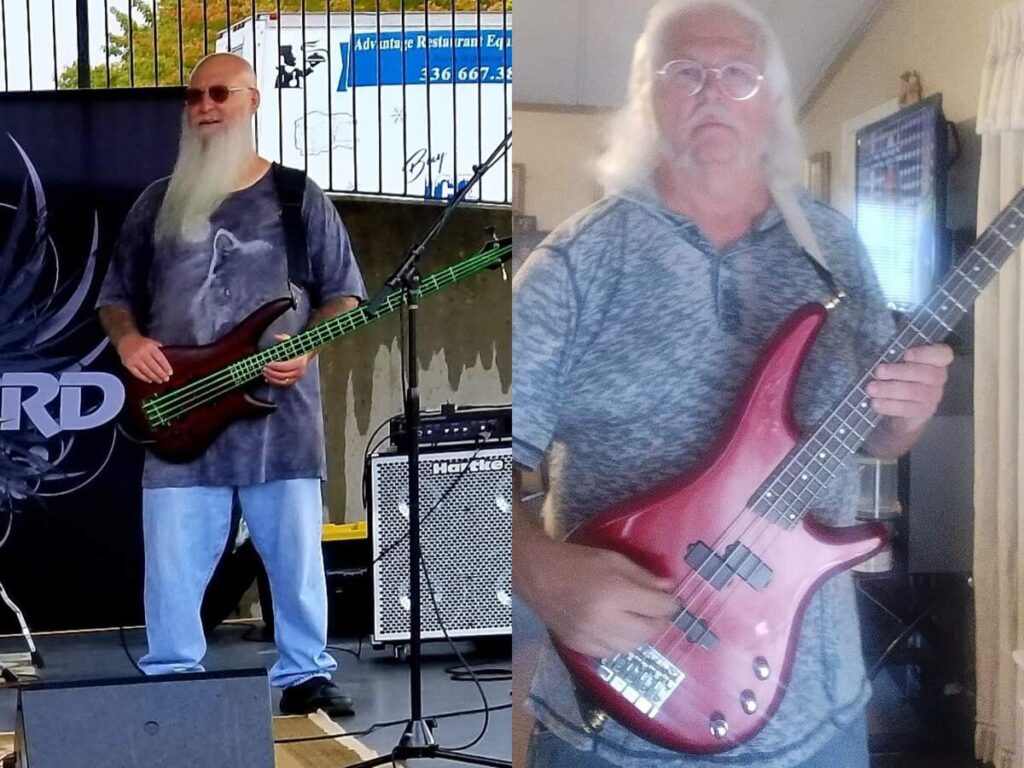
Thank you for taking your time. Last word is yours.
Michael: Thanks so much for the interest in the history of our little old band from Monroe, NC. Thanks to Klemen Breznikar and his magazine It’s Psychedelic Baby. And thank you, Dillon Smith and Noble Records for believing in our music and taking a chance on some old rock & rollers. The music we created in 1972 was raw with melt-your-face fuzz guitar riffs. The lyrics are mostly about young love or heartbreak. We really didn’t know the term psychedelic rock, we just wanted to play our songs and jam. Underground Fire. Streaming on all major markets, and records available soon at Noble Records. Thanks again.
Roger: Thank you! I am so blown away by anybody being interested enough in the recordings of a few teens made over 50 years ago to reissue the record today here in 2024. I am both humbled and excited to know what I thought would always remain a fun part of my past would somehow become sought after 50 years later. Thanks to you, Dillon Smith, Noble Records, and whoever ends up with a copy of the new pressing. I just cannot believe that original copies of this album have sold north of $1000…
In 1972 if someone had predicted this, I would have laughed my ass off…
Klemen Breznikar
Headline photo: Underground Fire at Arthur Smith’s Studios (December 1972)
Underground Fire Facebook
Noble Records Official Website / Facebook / Instagram / YouTube
Behind the Scenes: Dillon Smith Talks about Noble Records

